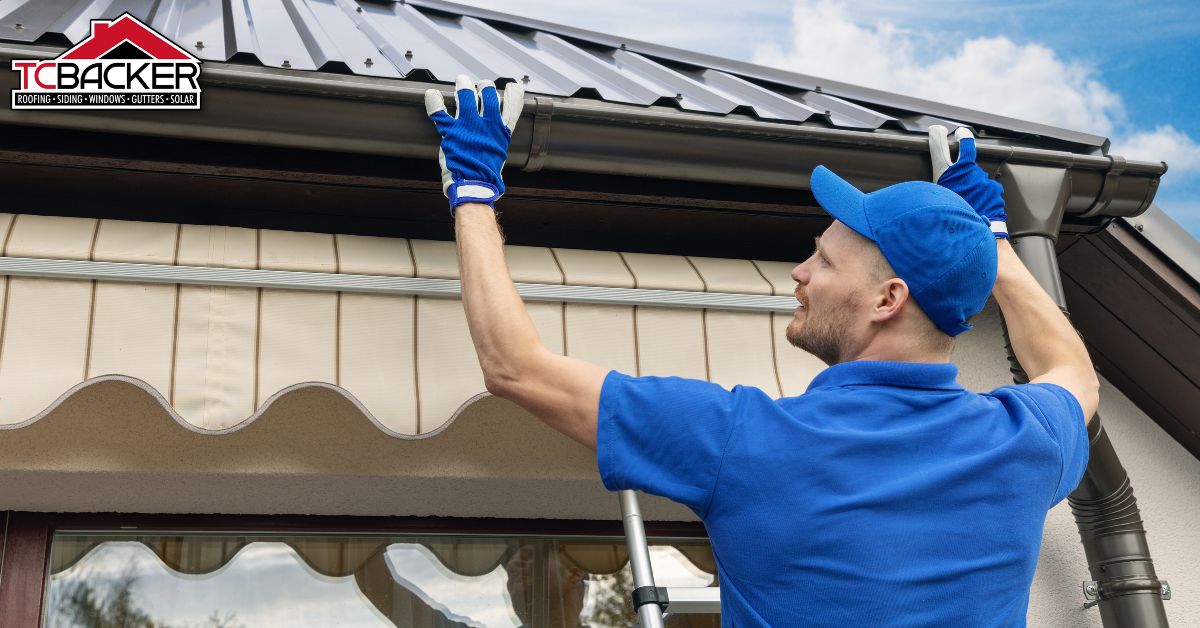Maintaining a roof is an important part of protecting a home from the elements. Understanding the optimal season for roof upkeep can actively facilitate swift detection and repair of issues, preventing them from escalating into significant concerns. It is important to consider local climate when determining the best time for roof maintenance, as well as to consider professional maintenance and regular inspections. With the right combination of knowledge and preparation, homeowners can maintain their roof in a way that maximizes its lifespan and minimizes repair costs.
In order to make sure that a roof is properly maintained, it is important to understand the different seasonal considerations that come into play.
Typically, roof maintenance is best undertaken in the spring and summer months when the weather conditions are generally more favorable for outdoor tasks.
On the other hand, fall and winter can present their own maintenance challenges and should not be overlooked.
Taking the time to understand the different seasonal factors involved in roof maintenance will help ensure that roofs are kept in optimal condition.
Check Your Local Climate
A review of the local climate should be conducted in order to assess the optimal period for performing roof upkeep. The temperature fluctuations and weather conditions unique to various regions should be factored in when planning for roof maintenance.
During roof maintenance, it is advisable to avoid extreme temperatures and adverse weather conditions. For instance, in cooler, northern regions, late autumn is an ideal time for roof upkeep due to the moderate weather that’s neither excessively hot nor cold. In the southern climates, the cooler temperatures of early spring are preferable.
Furthermore, it is important to inspect the roof for potential damage before initiating any maintenance activities. Being aware of the local climate can assist in identifying the most suitable period for conducting roof maintenance.
The spring and summer seasons are typically the most effective times for carrying out roof maintenance. In these seasons, the extended daylight hours and warm weather provide ample time to accomplish the roofing work efficiently. However, one should be aware of the potential for rainy days that may delay the work. Additionally, the high temperatures can cause the roof material to expand, making it more difficult to remove.
When scheduling roof maintenance in the spring and summer, it is important to take the local climate into consideration.
Spring and Summer Maintenance
During the spring and summer months, taking preventative measures to ensure the longevity of a roof can be beneficial. This can involve inspecting and cleaning the roof, checking for damage or signs of wear and tear, and making any necessary repairs. Homeowners should perform routine upkeep activities to proactively address any potential issues that may arise in the future.
Consistent upkeep also plays a vital role in guaranteeing the roof’s resilience during the anticipated extreme weather conditions of spring and summer. Assessing the roof for any damaged, dislodged, or absent shingles is crucial, and promptly addressing these issues can help avert additional damage. Additionally, it is important to clean and clear debris from the roof to prevent any water pooling and to avoid any buildup of dirt and grime.
Doing these tasks regularly can help to ensure that the roof lasts longer and remains in good condition. Beyond routine upkeep, it’s essential to scrutinize the roof for any indications of water intrusion or leakage. Immediate repair of any leaks is vital to inhibit the progression of potential damage.
Furthermore, it is important to maintain and clear any gutters of debris to ensure unobstructed water flow, preventing water accumulation around the roof. Taking these preventative measures during the spring and summer months can help to ensure that the roof is in good condition and can handle any extreme weather conditions that may arise.
Going forward, maintaining the roof during the fall and winter months holds equal importance.
Fall and Winter Maintenance
As the seasons change, it is crucial to prioritize adequate maintenance of the roof for the fall and winter months. The first step is to conduct a visual inspection of the roof for any signs of damage, such as missing shingles, curling, or cracking.
Next, homeowners should inspect and clear the gutters and downspouts of any debris to ensure effective drainage. In addition, it is crucial to seal any exposed nails and replace any loose nails to ensure proper roof maintenance.
Finally, it is essential to remove any vegetation, such as moss, to prevent roof damage. In order to properly maintain the roof during the fall and winter months, it is important to consider professional maintenance.
Professional maintenance will provide an in-depth assessment of the roof and identify any potential issues that could cause extensive damage. Additionally, a professional can provide advice on how to properly maintain the roof to ensure its longevity.
Consider Professional Maintenance
Professional maintenance assesses the roof’s condition and advises on maximizing its longevity. A roofer identifies and fixes shingle issues while preventing them from becoming major problems. A roofer checks gutters, clears blockages, ensures drainage, and advises on suitable materials and installation methods.
Having a professional inspect and maintain the roof on a regular basis is an important part of the maintenance process. Regular inspections can help identify any potential issues before they become serious, saving money and avoiding costly repairs.
Having a professional assess the roof’s condition provides peace of mind, ensuring long-lasting quality. Regular inspections are an invaluable part of keeping the roof in top shape.
Regular Inspections
Regular inspections are a beneficial part of preserving the longevity and structural integrity of the roof. Routine inspections aid in identifying potential issues before they escalate into significant problems, guaranteeing timely addressing of any necessary repairs.
Homeowners can proactively maintain their roofs by conducting regular inspections, addressing weaknesses before severe weather strikes. Regular inspections can prevent costly repairs by addressing potential issues before they become expensive.
Conclusion
Regular inspections are essential when it comes to maintaining a sound roof. Proper roof maintenance requires monitoring both the roof’s condition and the local climate.
Spring and summer are the best times to perform maintenance on a roof, due to the more temperate weather. To ensure the roof is ready for the coming year, homeowners should perform fall and winter maintenance.
Hiring professionals ensures superior care for extensive maintenance and repairs. By taking the time to properly inspect and maintain your roof, you can ensure its longevity and maximize its performance.
Schedule a professional inspection: Contact TC Backer Construction to book a comprehensive roof inspection. Our skilled team will thoroughly assess your roof’s condition and identify any potential issues.
The post Best Time Of Year For Roof Maintenance appeared first on TC Backer Construction.





